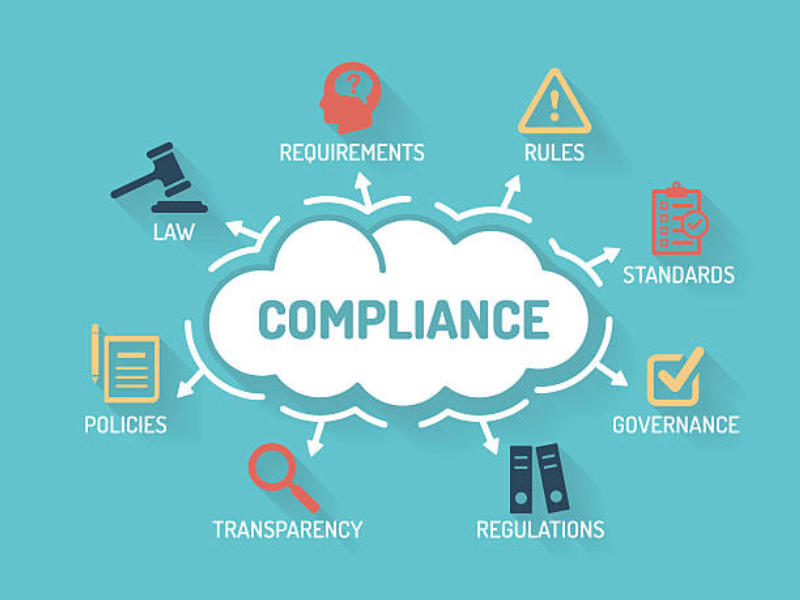HR Compliance Roadmap: Navigating the Legal Landscape with 8 Musts
As a Human Resource consultant, you understand the critical importance of navigating the complex legal landscape to ensure your organization operates in accordance with laws and regulations. Staying abreast of ever-changing compliance requirements is not only essential for avoiding legal pitfalls but also for fostering a fair and transparent work environment. In this article, we’ll explore eight HR compliance musts to guide you through the legal intricacies and keep your organization on the right side of the law.
1 Stay Current On Employment Laws:
Overview:
Employment laws are subject to regular updates and changes. Staying informed is foundational to compliance.
Implementation:
– Regular Training: Conduct regular training sessions to update HR staff on changes in employment laws.
– Legal Updates Subscription: Subscribe to legal updates and newsletters to stay informed about regulatory changes.
Impact:
Ensures that your organization operates in compliance with the latest legal requirements, reducing the risk of legal disputes.
2 Document And Communicate Policies Clearly:
Overview:
Clear and comprehensive documentation of HR policies is crucial for both legal compliance and employee understanding.
Implementation:
– Employee Handbook: Maintain a comprehensive employee handbook that outlines all policies.
– Regular Communication: Regularly communicate policy changes to employees through various channels.
Impact:
Mitigates legal risks by providing a clear framework for acceptable behavior and expectations within the organization.
3 Accurate Record Keeping:
Overview:
Maintaining accurate and organized records is fundamental for compliance and legal defense.
Implementation:
– Digital Record-keeping Systems: Utilize secure digital systems for record keeping.
– Regular Audits: Conduct regular audits to ensure records are up-to-date and compliant.
Impact:
Facilitates compliance with record-keeping requirements and provides a reliable source for legal documentation.
4 Fair Employment Practices:
Overview:
Promoting fair employment practices is not only ethically crucial but also a legal imperative.
Implementation:
– Diversity and Inclusion Programs: Implement programs that promote diversity and inclusion.
– Unbiased Hiring Practices: Ensure hiring processes are free from discrimination.
Impact:
Reduces the risk of discrimination claims and fosters a positive work environment.
5 Proper Classification Of Employees:
Overview:
Correctly classifying employees as exempt or non-exempt is crucial to compliance with wage and hour laws.
Implementation:
– Regular Audits: Conduct regular audits of employee classifications.
– Consult Legal Experts: Seek legal advice to ensure accurate employee classifications.
Impact:
Mitigates the risk of wage and hour violations and legal repercussions associated with misclassification.
6 Promptly Address Employee Complaints:
Overview:
Addressing employee complaints promptly and effectively is vital for maintaining a healthy workplace.
Implementation:
– Establish Complaint Channels: Provide multiple channels for employees to report complaints.
– Investigate Thoroughly: Conduct thorough investigations into all reported complaints.
Impact:
Demonstrates a commitment to addressing workplace concerns, reducing the risk of legal action.
7 Training On Harassment Prevention:
Overview:
Creating a workplace free from harassment requires proactive training and preventative measures.
Implementation:
– Regular Training Programs: Implement regular training programs on harassment prevention.
– Clear Reporting Procedures: Establish clear procedures for reporting harassment and ensure employees are aware of them.
Impact:
Reduces the risk of legal action related to workplace harassment and fosters a respectful organizational culture.
8 Compliance With Health And Safety Regulations:
Overview:
Ensuring a safe and healthy work environment is not just ethical; it’s legally mandated.
Implementation:
– Regular Safety Audits: Conduct regular audits to ensure compliance with health and safety regulations.
– Employee Training: Provide employees with training on safety protocols and procedures.
Impact:
Mitigates legal risks associated with workplace injuries and illnesses, fostering a secure work environment.
Conclusion: Guiding Your Organization To Compliance Success
Navigating the legal landscape of HR compliance requires diligence, ongoing education, and a commitment to creating a fair and lawful workplace. As a Human Resource consultant, incorporating these eight compliance musts into your strategy will guide your organization towards legal success. By staying current on employment laws, documenting and communicating policies clearly, maintaining accurate record-keeping, promoting fair employment practices, correctly classifying employees, promptly addressing employee complaints, training on harassment prevention, and ensuring compliance with health and safety regulations, you build a solid foundation for legal compliance and a workplace culture that prioritizes ethical practices. Remember, compliance is not a one-time effort but an ongoing commitment to upholding the highest standards of fairness, transparency, and legal adherence within your organization.

